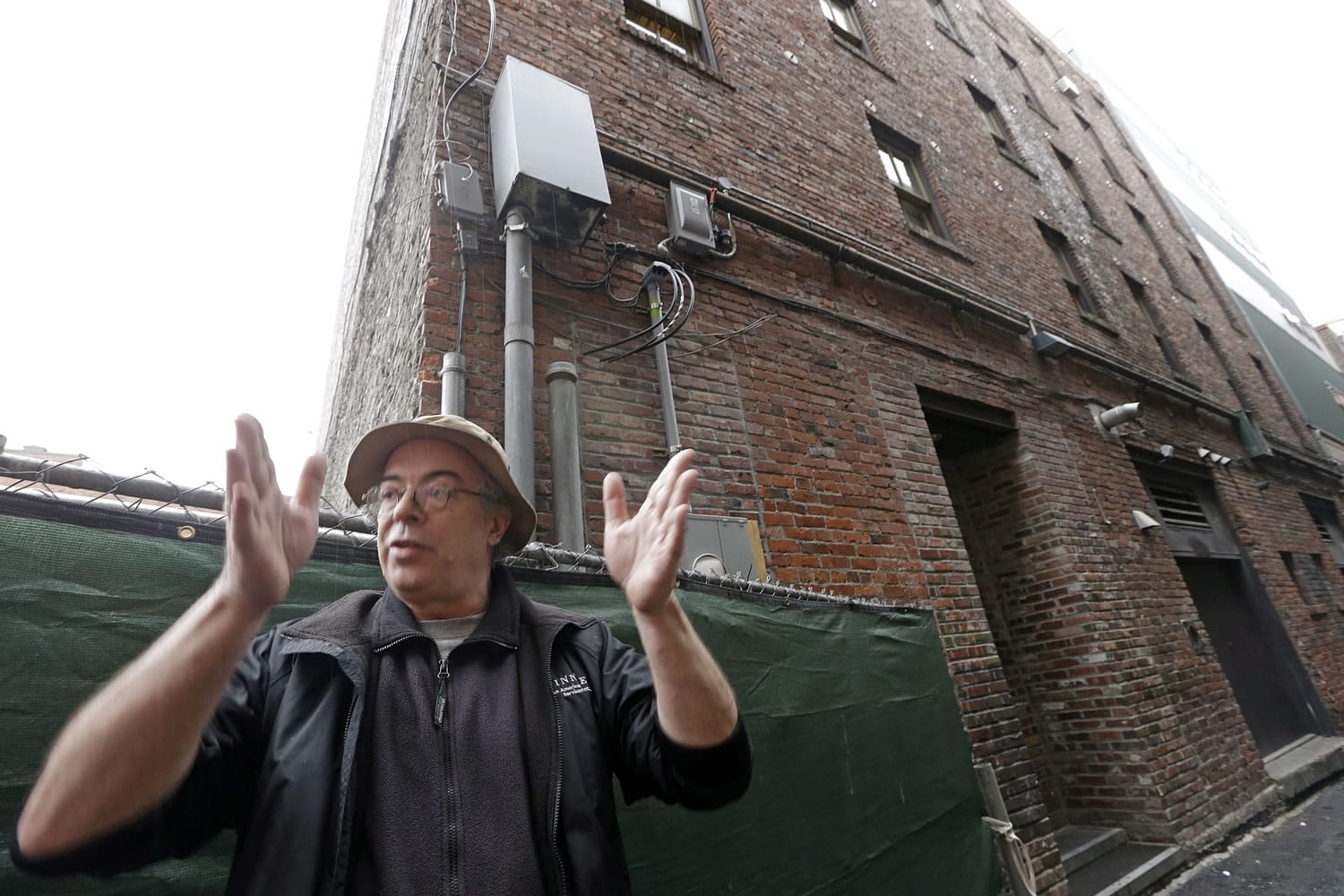SEATTLE — Each time Mike Petrone wrestles the newly stuck door open and heads to the basement underneath J&M Cafe in Seattle’s historic Pioneer Square, he finds a new crack, a new leak, deeper sinking of a concrete walkway.
“That doubled in size in the past three or four months,” Petrone said, pointing to a diagonal crack running up one of the basement’s outside walls. “The floor used to be level — six months ago it was level — but now it sinks in the center. And now water drips from the ceiling.”
J&M Cafe, established in 1889 to serve Gold Rush prospectors, sits a few blocks away from a giant access pit being dug so crews working to replace the Alaskan Way Viaduct can reach a broken-down tunneling machine. When they began pulling water out of deep wells under the pit to lessen the pressure, a monitoring system detected about 1 inch of ground sinking in the area that included the saloon, Todd Trepanier, the state transportation department’s viaduct program administrator, told the City Council.
“We don’t like an inch,” Trepanier told the council, but quickly added that it appeared to be uniform and stable and no threat to the safety of the State Route 99 bridge the tunnel aims to replace.
After the 61-year-old viaduct suffered damage in a 2001 earthquake, city and state officials agreed on a plan to move the highway underneath the city and open up the waterfront.
The tunneling machine, known as Bertha, began drilling last year but broke down in December 2013. Engineers came up with a plan to fix the machine by digging a 120-foot pit in front of Bertha so it could be pulled out.
They’d dug about 83 feet before ground monitors detected settlement.
The sinking soil prompted new surveys and inspections of the viaduct and buildings along Alaskan Way and Pioneer Square. Engineers hope to determine whether the deep de-watering and ground settlement are linked.
Trepanier said the timing suggested a cause and effect and will report back to the council on Monday.
Thursday afternoon transportation crews closed a road adjacent to the pit after reports that a section was sinking. Viaduct project spokeswoman Laura Newborn said they were investigating the dip but did not immediately know what caused it.
People living and working in the area say regardless of the cause, buildings in the neighborhood are changing fast.
“This one is definitely new,” said lawyer Robie Russell as he pointed to a foot-long crack that stair-stepped its way along the edges of the bricks making up the wall in his office across the street from the access pit. “It wasn’t there before.”
Next door in the historic OK Hotel, which now holds apartments and artist studios, Cyrus Charters is keeping track of the new cracks. He said he lived through California’s Northridge earthquake, so he watches for these things.
“Six weeks ago this place started changing dramatically,” said Charters, who has lived there since 2006. “I’d be sitting in my apartment and the walls would go click, click, click. And then a few weeks ago the tenor changed, it was lower, more like a clunk, clunk. … It’s settling.”
Jay Stilwell in the Seattle Publishing building a block away noticed the sidewalks starting to angle and dip. He blames the disappearing groundwater.
“These buildings are sitting on fill — that’s why the earthquake did so much damage. Everything liquefied,” he said. “And now they’re taking out the ground water. … We’re investing in a disaster.”
Steve Kramer, a professor of geotechnical engineering at the University of Washington, agreed the soils under Seattle are “fill and a hodge-podge of different materials” that were placed there in the late 1800s.
“It’s difficult to predict their behavior,” he said.
Each of the structures built upon these unpredictable soils will respond differently, depending on their foundations, he said.
“There are a lot of older structures that tend to be brittle and poorly reinforced,” he said. “They tend to be less tolerant of displacements of their foundations.”
Kramer said he has not worked on the tunnel project, but saw photos of the cracking under J&M.
“If all of that movement is due to the tunnel work, that looked a little alarming to me,” he said.



